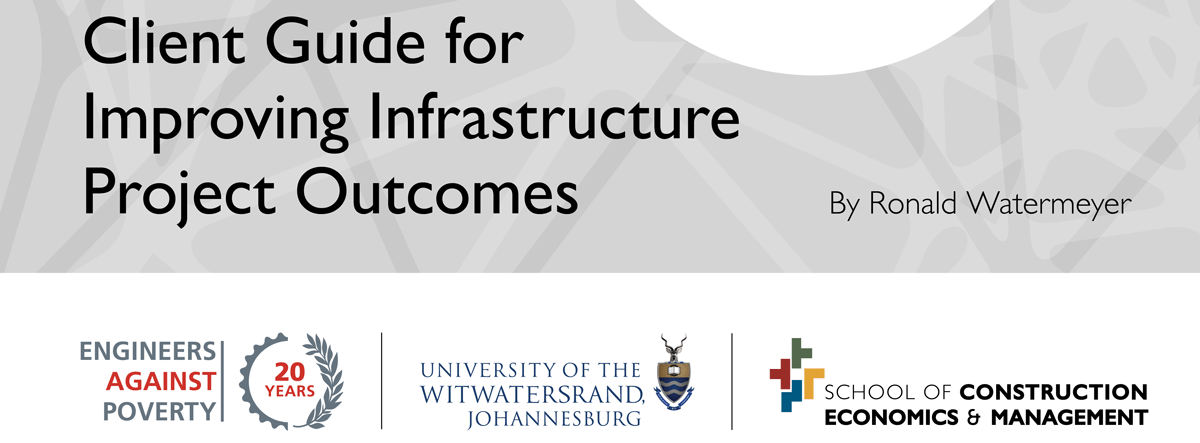
Client Guide
Infrastructure is foundational to a better life for all
Communities are surrounded by infrastructure (the basic physical and organisational structures and facilities needed for the operation of a society or an enterprise) including the homes in which they live, the offices and factories in which they work, schools which are essential for the education of their children, and hospitals and clinics which are fundamental for their health and wellbeing. They are also surrounded by economic infrastructure which supports the economy in its totality. Road and railway infrastructure not only enable travel between homes and places of work, schools and hospitals but also distribute goods and services to communities. Border posts, harbours and airports are the physical links with neighbouring countries and the world. Dams provide water not only for human consumption but also for agricultural and industrial purposes. Power stations generate electricity. Networks deliver water and electricity to homes, places of work, schools and hospitals and convey industrial effluent and waste water to treatment works. Infrastructure is foundational to a better life for all.
About the Client Guide
The Client Guide, authored by Dr Ron Watermeyer, visiting adjunct professor at Wits, draws from a long and shared history of developmental experience with infrastructure provision.
The Guide looks at all aspects of infrastructure development, from the role of client and procurement strategy, to delivery management, project governance and value for money.

